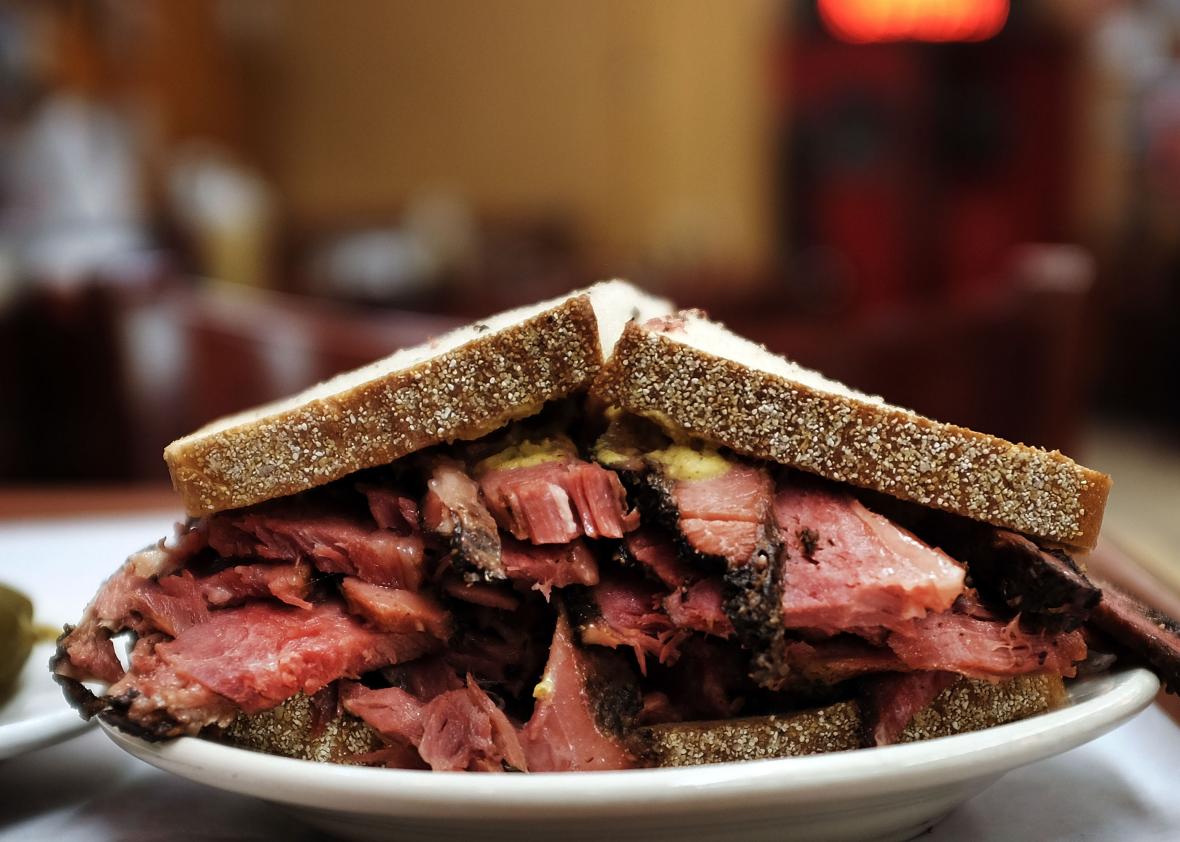Do Sandwich Makers Make Smaller Sandwiches for Women Than for Men?

Photo by Spencer Platt/Getty Images
My friend Dan Pashman, who hosts the Sporkful podcast, reached out to me several weeks ago with a mystery I’d never pondered: Do professional sandwich-makers make smaller sandwiches for women than for men, either intentionally or due to unconscious bias? Dan had gotten the idea from a caller on his show named Bill, who hypothesized, “They make the sandwiches smaller for women … and I think you guys should do an episode where you guys do some investigative eating and get out there and see if there’s a gender disparity in sandwich making.”
Dan and I both found the notion of sandwich sexism appalling. As a matter of fairness, people who pay the same amount for sandwiches should receive the same amount of food, regardless of their physical characteristics. As Dan put it, “Equal pay for equal pastrami.”
Dan invited me to go on a reporting excursion with him to test out Bill’s theory. We chose five diversified sandwich restaurants where the person who takes your order is the same person who makes your order—otherwise, there’d be no chance of bias based on the customer’s appearance. One of us would go in alone and place our order, then the other would go in independently and make the same order, then we’d go back in together to ask the sandwich makers for their thoughts on whether sandwich discrimination is a real phenomenon. Finally, we’d return to Dan’s office and weigh all the sandwiches to see whether there was a pattern of my sandwiches weighing less than his.
The day we conducted our experiment in early September was very hot, and we quickly ran into some hurdles. Even though most of the restaurants we’d chosen were in the same neighborhood in Lower Manhattan, it took more time than expected to travel by foot to all of them. At our first stop, a bodega, the sandwich maker was too busy frying bacon to talk to us. The second place we visited, an old-school Italian deli, was extremely crowded, leading to a long wait time. The third place, a banh mi joint, had different people taking orders and making sandwiches, which sadly disqualified it. (We drowned our sorrows in Vietnamese iced coffees.)
By the end of the afternoon, we were each in possession of four sandwiches, and we were both very, very hungry. We’d gotten contradictory opinions from the sandwich makers we’d interviewed: The only female sandwich maker we talked to said that she’d witnessed a disparity in serving sizes for men and women throughout her career in food service, but a male veteran of the industry assured us, “I always make sure to keep it the same. I really don’t focus on the customer, I focus on the sandwich.” You can hear more of our interviews with sandwich makers in this week’s episode of the Sporkful:
The results of our weigh-in, however, seemed to contradict both of them. For all but one of the sandwich pairs, my sandwich weighed a little more than Dan’s sandwich. If there was any bias in play, it favored women rather than men.
But that’s a big if. The scientists among you will note that four is not a very big sample size, and there was a very decent possibility that our results were due to chance. Dan even ran our numbers by a statistician friend of his, who confirmed, “Out of the four pairs of sandwiches, we did not find a statistically significant difference.” So what did Dan and I learn? At best, our experiment ruled out the possibility that discrimination against female customers is rampant and conspicuous in the New York sandwich industry. More research is needed to determine whether there’s any systemic gender bias one way or the other. It’s not the most satisfying conclusion imaginable, but it’s enough to put my mind at ease the next time I order a sandwich for lunch: In all likelihood, I won’t be shortchanged because of my sex.

